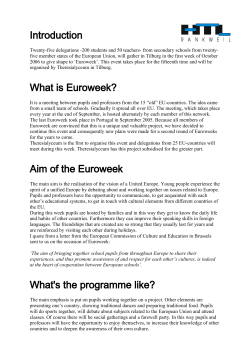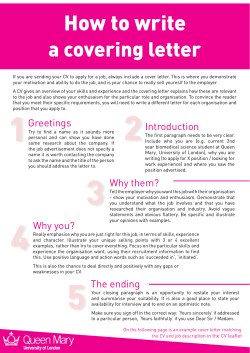
P S Learning
BADGER MATHS Le FOR YEAR 3 ar ni ng PROBLEM SOLVING Written and illustrated by © Ba dg er Andy Seed Contents Introduction 3 The Problem Solving Process 4 Drawing a Diagram 5 Drawing a Table 19 pl e Pa ge National Numeracy Strategy (NNS) Links Acting it Out or Using Concrete Material 34 Guessing and Checking 49 Creating an Organised List 64 Looking for a Pattern 77 am S 2 Introduction The aim of Badger Maths Problem Solving is to provide a valuable resource for teachers to enhance the ability of Y3 pupils in maths problem solving. The materials in the book support the National Numeracy Strategy objectives and, in particular, address the widely recognised need for a greater emphasis on using and applying mathematics. ng How the book is organised ar ni The ‘Problem Solving Process’ on page 4 outlines the essential broad strategies required for pupils at KS2 to solve problems in maths. It outlines a comprehensive four-step approach which includes spending time on explaining methods and reflecting. Le The book is divided into six main sections, each dealing with problems which can be solved using a particular strategy. In each of these sections, there is a page of teaching notes about how the strategy works and three teaching examples which can be worked through with the whole class. These examples put into practice the four-step approach to problem solving outlined in the first chapter, and include answers and extension activities. dg er Each main section of the book includes five or six copiable problem solving task cards. Each of these pages consists of three illustrated problems to solve in the form of questions or activities. The problems, numbered 1 to 102, are presented at three broad levels to provide differentiation: • Level A for pupils working below the national expectations. • Level B for pupils working at the level of national expectations. • Level C for pupils working above national expectations. © Ba There is also a Copymaster for each section with prompt questions to help children work through the book’s four-step approach to problem solving. This may be appropriate where children need extra help or reinforcement of the appropriate strategy. The National Numeracy Strategy (NNS) and National Curriculum ge The chart opposite gives details of where each of the book’s individual numbered problems fits into the NNS framework. Most of the problems obviously come under the framework’s Problem Solving strand, although some references are included twice because they also fit into other categories such as Number Sequences or Measures. Pa A small number of problems do not fit easily into an NNS topic and have been included under Puzzles or Real Life Problems. pl e There are no references to the Calculations strand of the NNS since the book is primarily concerned with using and applying maths rather than the mechanics of calculation, although it must be stressed that pupils should be encouraged to talk about the methods they use to solve problems at every opportunity. S am The material in the book also addresses the Using and Applying/Problem Solving strands of each attainment target in the National Curriculum for maths at KS2. Using this book The book is flexibly structured and designed to be used in several different ways: • To help teachers teach effective strategies and approaches for solving problems. • To resource individual NNS topics, such as Length or Fractions, particularly where extra practice at using and applying maths is required. • To provide differentiated practice at various problem solving strategies, e.g. drawing tables and using diagrams. • For homework exercises or extra preparation for other maths assessments. 2 NATIONAL NUMERACY STRATEGY (NNS) LINKS Numeracy Framework topic Numbers and the Number System Properties of numbers and number sequences 16-21 7 (p13), 10 (p14), 18 (p16), 19 (p26), 22 (p27), 24 (p27), 34 (p31), 37 (p41), 42 (p42), 55 (p55), 57 (p55), 58 (p56), 59 (p56), 60 (p56), 61 (p57), 62 (p57), 66 (p58), 69 (p59), 70 (p60), 74 (p69), 78 (p70), 79 (p71), 84 (p72), 89 (p82), 92 (p83), 93 (p83), 94 (p84), 97 (p85), 98 (p85), 100 (p86) Ratio and proportion 26-27 18 28 36 64 Making decisions 74-75 7 (p13), 14 (p15), 25 (p28), 31 (p30), 34 (p31), 37 (p41), 49 (p45), 68 (p59), 75 (p69), 76 (p70), 82 (p72), 93 (p83), 98 (p85) Reasoning about numbers and shapes: puzzles 78-79 1 (p11), 2 (p11), 4 (p12), 17 (p16), 22 (p27), 23 (p27), 28 (p29), 35 (p31), 39 (p41), 40 (p42), 46 (p44), 47 (p44), 50 (p45), 51 (p45), 52 (p46), 54 (p46), 55 (p55), 56 (p55), 59 (p56), 62 (p57), 63 (p57), 65 (p58), 66 (p58), 70 (p60), 72 (p60), 75 (p69), 96 (p84), 99 (p85), 100 (p86) ar ni 23 33 48 95 (p27), 27 (p28), (p30), 35 (p31), (p44), 56 (p55), (p84) Le (p26), (p29), (p43), (p60), dg er 19 29 44 70 10 37 77 83 Problems involving money 84-85 18 (p16), 26 (p28), 68 (p59), 71 (p60), 87 (p73), 102 (p86) Problems involving measures 86-87 8 (p13), 11 (p14), 12 (p14), 13 (p15), 16 (p16), 21 (p26), 22 (p27), 67 (p59), 101 (p86) Problems involving time 88-89 15 (p15), 20 (p26), 45 (p43) 90-95 8 (p12), 11 (p14), 12 (p14), 13 (p15), 16 (p16), 21 (p26), 41 (p42) Properties of 3-D and 2-D shapes 102105 4 (p12), 17 (p16), 52 (p46) Position and direction 108109 3 (p11), 5 (p12), 6 (p12), 8 (p13), 9 (p13), 14 (p15), 37 (p41), 38 (p41), 43 (p43), 47 (p44), 73 (p69), 88 (p82), 90 (p82), 91 (p83) Organising and interpreting data 114117 20 24 28 32 36 Pa e Length, mass and capacity pl am S Handling Data (p16), (p29), (p31), (p58), 82-83 ge Real life problems Measures, Shape and Space Problem number and page © Ba Solving Problems NNS ref ng NNS Strand 3 (p14), (p41), (p70), (p72), (p26), (p27), (p29), (p30), (p31) 16 53 80 84 21 25 29 33 (p16), (p46), (p71), (p72), (p26), (p28), (p29), (p30), 19 67 81 85 22 26 30 34 (p26), (p59), (p71), (p73), (p27), (p28), (p29), (p51), 27 76 82 86 23 27 31 35 (p28), (p70), (p72), (73) (p27), (p28), (p30), (p31), Problem Solving THE PROBLEM SOLVING PROCESS Some possible strategies include: • Drawing a sketch or table. • Acting out situations or using concrete materials. • Organising a list. • Identifying a pattern and extending it. • Guessing and checking. • Working backwards. • Using simpler numbers to solve the problem, then applying the same methodology to the real problem. • Writing a number sentence. • Using logic and clues. • Breaking the problem into smaller parts. ng It is important that pupils follow a logical and systematic approach to their problem solving. Following these four steps will enable pupils to tackle problems in a structured and meaningful way. • • Le • • Pupils should write down their ideas as they work so that they don’t forget how they approached the problem. Their approach should be systematic as far as possible. If stuck, pupils should reread the problem and rethink their strategies. Pupils should be given the opportunity to orally demonstrate or explain how they reached an answer. er • STEP 3: SOLVING THE PROBLEM dg • Encourage pupils to read the problem carefully a number of times until they fully understand what is wanted. They may need to discuss the problem with someone else or re-write it in their own words. Pupils should ask internal questions such as, what is the problem asking me to do, what information is relevant and necessary for solving the problem? They should underline any unfamiliar words and find out their meanings. They should select information they know and decide what is unknown or needs to be discovered. They should see if there is any unnecessary information. A sketch of the problem often helps their understanding. • © Ba • ar ni STEP 1: UNDERSTANDING THE PROBLEM • STEP 4: REFLECT ge STEP 2: PUPILS SHOULD DECIDE ON A STRATEGY OR PLAN • Pa Pupils should decide how they will solve the problem by thinking about the different strategies that can be used. They could try to make predictions, or guesses, about the problem. Often these guesses result in generalisations which help to solve problems. Pupils should be discouraged from making wild guesses but they should be encouraged to take risks. They should always think in terms of how this problem relates to other problems that they have solved. pl e • S am • • 4 Pupils should consider if their answer makes sense and if it has answered what was asked. Pupils should draw and write down their thinking processes, estimations and approach, as this gives them time to reflect on their practices. When they have an answer, they should explain the process to someone else. Pupils should ask themselves ‘what if’ to link this problem to another. This will take their exploration to a deeper level and encourage their use of logical thought processes. Pupils should consider if it is possible to do the problem a simpler way. Solve THAT PROBLEM! Le er dg © Ba S am pl e Pa ge THAT PROBLEM! Solve Solve THAT PROBLEM! ar ni ng Drawing a Diagram Solve THAT PROBLEM! 5 Teaching Notes Drawing a Diagram Mapping or showing direction Drawing a picture of a word problem often reveals aspects of the problem that may not be apparent at first. If the situation described in the problem is difficult to visualise, a diagram, using simple symbols or pictures, may enable pupils to see the situation more easily. The diagram will also help pupils to keep track of the stages of a problem where there is more than one step. In order to use the strategy of drawing a diagram effectively, pupils will need to develop the following skills and understanding. Le ar ni ng Pupils will sometimes be faced with diagrams that require them to have an understanding of direction. They will also meet problems where they are asked to plot a simple course by moving up, down, left or right on a grid. They will also need to use the compass points to direct themselves – north, south, east, west. Pupils will also need to become familiar with measurement words which may be unfamiliar to them, such as pace. Opportunities should be given for the pupils to work out how many paces it takes to cover the length and breadth of the classroom or to pace out the playground, so they develop a means of comparison. An ability to use a simple map is also important, as maps are sometimes used in mathematical problems such as this one: dg Which is the shortest route from Bigtown to Seaby? ge © Ba Simple line drawings help pupils to visualise a situation. For example, consider the following problem: Brian drew four marks on a long stick, starting at the beginning and finishing at the end. Each mark was one metre apart. How long was the stick? In response, pupils may calculate mentally 4 x 1 = 4, but the stick is in fact three metres long. If pupils draw the stick and markers, they will be able to see this: er Using a line to symbolise an object Using a distance line to display the information Pa Showing the relationships between things A distance line helps to show distance or movement from one point to another. Pupils were asked to calculate how far they were from one end of a 30m path, if they were 9m from the other end. In this case, drawing the line and marking the distances on it can help them to ‘see’ the problem: e Pupils will find it helpful to draw diagrams and use symbols in order to visualise the relationships between things. am pl For example: Joe Brown hair Asif Blue eyes Ben Freckles S Drawing a picture Drawing a picture can help pupils to organise their thoughts and so simplify a problem. How many different rectangles can you make with four squares? 6 Teaching Examples Drawing a Diagram EXAMPLE 1 Then we are told that the green brick is below the red brick. The red brick can be added to the drawing: ng A baby Floop from Mars built a tower using four different Lugo bricks. The blue brick was below the green brick. The green brick was below the red brick. The yellow brick was at the bottom. Which brick was on top? Le ar ni Finally, we know that the yellow brick is at the bottom: Pupils should be taught to go back to the question once the drawing is made, to check that their picture conforms to what the question says. In this case, we can clearly see that the red brick was the one on top of the tower. Reflecting and generalising © Ba What do we need to find out? Questioning: How can we find out which brick was on top? dg What do we know? We know there are four bricks in the tower. We know which brick was at the bottom. We know that some bricks were below others. er Understanding the problem Once pupils have reflected on the solution, they can generalise about problems of this type and see how this solution can be applied to similar problems. Would this method work if there were five bricks or ten? Or if the bricks were in a horizontal line? They should think about how else the problem could be solved – by using Lego bricks, perhaps. Pupils should also consider if the method can be made quicker or easier. Planning and communicating a solution Pa ge What we did It is important that pupils develop their ability to logically explain their strategy. They should try to use mathematical language and drawings such as simple pictures, charts and diagrams in their explanation or during the problem solving process. Some pupils will attempt to answer straight away without a diagram: some of them will be correct and some will not. Pupils should be encouraged to draw a picture so that the problem is clarified. They will then be able to see the order of the bricks. pl e Extension S am What if five bricks were used and a white brick was above the yellow? Could we still solve the problem if one of the pieces of information was missing? Do we know which brick is at the bottom if there are four bricks and the blue is above the yellow but below the red and the red is below the green? Step-by-step explanation First, we are told that the blue brick was below the green brick. This is straightforward to draw: 7 Copymaster Drawing a Diagram Understanding the problem List what you know from reading the problem. ............................................................ ng ............................................................ ar ni ............................................................ What do you need to find out? Le Are there any words you don’t know? Is there anything you don’t understand? ............................................................ er ............................................................ dg ............................................................ Finding and writing the answer © Ba Can you draw a picture or diagram to help you find the answer? Will a line be helpful? Can measurements or directions be shown in your drawing? Can you use symbols like arrows or shapes? ge ............................................................ ............................................................ Pa ............................................................ e ............................................................ pl Thinking about the problem S am What did you find? Did you check your answer to see if it matched the question? Was there another way you could have done it? ............................................................ ............................................................ ............................................................ ............................................................ Y3 Problem Solving © Badger Publishing Problem Solving Task Cards Drawing a Diagram Level PROBLEM 7 B PROBLEM 8 Level B ge © Ba A Jiva-Jiva went for a walk from her house. She walked north for 2 kilometres, then west for 1 kilometre, then south for 1 kilometre, then east for 2 kilometres. dg er Le ar ni ng Phop planted 3 rows of onions, with 6 in each row. Birds ate half of the first row. How many onions were left altogether? e Pa Did she finish at home? pl PROBLEM 9 Level B S am A Brip walks up 9 steps of a staircase then goes back 4 steps to pick up something she has dropped. She then walks 8 steps to the top. How many steps does the staircase have? Y3 Problem Solving © Badger Publishing
© Copyright 2025









